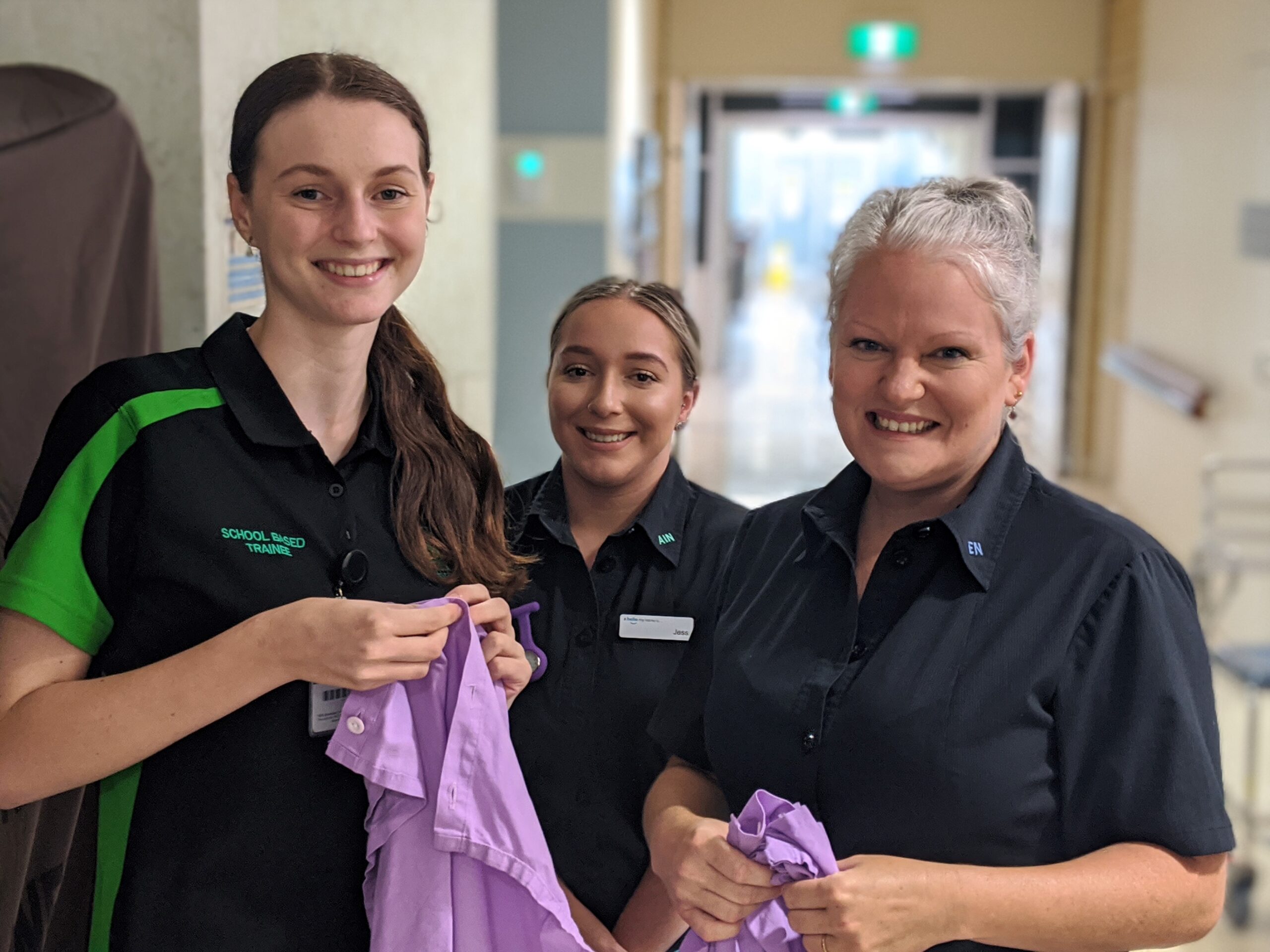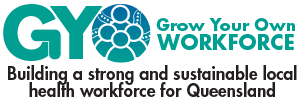Bayside Health Service
- Outside-in
- Health Sector
- South East Queensland

The Challenge
Redland Hospital is the major health centre for Redland City and Brisbane’s southern bayside suburbs. Care is provided across a number of specialties including general medicine and surgery, cardiology, emergency medicine, obstetrics and gynaecology, orthopaedics, renal dialysis and paediatrics.
The challenge for Redland Hospital and nursing in particular is twofold. This is due to impending global workforce shortages coupled with complex healthcare needs. Globally healthcare is facing a rise in chronic disease which could be considered the largest healthcare challenge of the 21st century (Tolhurst et al., 2016). In addition to the increase in burden due to chronic disease there is a looming nursing workforce crisis. Oulton (2006) has coined the gap between nursing workforce requirements and the availability of supply to meet healthcare demands as a global crisis. These workforce demands highlight a need for increasing workforce capacity supporting the requirement to promote the profession of nursing to potential future nurses (Auerbach et al., 2017).
The Bayside Health Service school-based traineeship program was established with a dual purpose of contributing towards nursing workforce strategies as well as addressing the social responsibility for organisations to support youth in the local community.
The Solution
- To increase awareness of health career pathways within the Bayside area.
- To build a sustainable workforce in the local region by targeting school students in years 11 and 12 to commence a school-based traineeship program.
- To engage and support youth in the local community by providing education to employment pathways.
- To provide both a workforce and social commitment to the community.
Implementation
The nursing school-based traineeship program is a highly competitive initiative which is available to high school students in grades 11 and 12. The first cohort of trainees commenced in 2016 and is currently progressing cohort number five (5) throughout 2020-21. The program connects with the local schools to source students interested in healthcare. The traineeship runs for 12 months with trainees undertaking both theoretical studies and practical clinical work. The course work consists of a Certificate III in Individual Support which provides trainees qualifications to work as an Assistant in Nursing at the end of the traineeship. The practical component requires trainees to work one day per week, eight (8) hours per day and are required to complete 375 hours over the year. Trainees are buddied with a nursing mentor in one of the hospital’s medical or surgical wards. These clinical work hours are a paid placement with trainees working within a clinical scope of practice to support direct patient care.
Organisational strategies
- Developing a grow your own workforce approach for in demand entry level roles (an outside-in approach)
- Engaging with youth in the local community to promote healthcare as a career choice
Partnership strategies
- The program utilises strong partnership models with all stakeholders involved. These include Group Training Organisation (GTO) OSMAC Group Training, Registered Training Organisation (RTO) TAFE Queensland, hospital staff, schools, students and their families.
Program design strategies
- Ensuring the school-based traineeship is undertaken for the ‘right reasons’
- Utilising a robust recruitment process to select the most suitable applicants
- Ensuring wraparound support for students is in place to generate high completion rates and quality outcomes for both student and hospital
Results
The following results have been accomplished across the four (4) completed cohorts since 2016. The table below breaks down each outcome per individual cohort.
- 94% (15 of 16) completed traineeship
- 37% (6 of 16) post school study in healthcare
- 50% (8 of 16) gained employment in hospital or other healthcare setting
- Multiple Queensland Traineeship and Apprenticeship Awards finalists and winners
- Improved community relationships and reputation
- Engaged nurses as part of the hospital wide workforce
- Opportunity to expand the success of the nursing program to other disciplines across the hospital
School Based Trainee Outcomes
|
| Trainee numbers | Completed SBT program | Post School Study | Post traineeship employment @ hospital | Post traineeship employment @ other healthcare |
Grand Totals |
| 16 | 15 | 6 | 6 | 2 |
% |
|
| 94 | 37 | 37 | 12 |
Cohort 1 | 2016-17 | 4 | 4 | 3 | 1 | 1 |
Cohort 2 | 2017-18 | 4 | 4 | 2 | 2 | 1 |
Cohort 3 | 2018-19 | 4 | 4 | 1 | 2 | 0 |
Cohort 4* | 2019-20 | 4 | 3 | 0 | 1 | 0 |
Cohort 5** | 2020-21 | 4 | tba | tba | tba | tba |
* Cohort 4 trainees are yet to complete school – post school study TBA.
** Cohort 5 trainee numbers have not been included within totals – will be updated once their program is complete
This will increase the % for post school study and employment rates towards the end of 2020.
Lessons Learned
- Ensure strong engagement and relationships are established between all stakeholders.
- Manage staff expectations early and set a clear scope of work for trainees.
- Ensure regular debrief sessions are in place for trainees.
- Ensure forums are in place so trainees can share their stories with internal and external parties.
- Work towards guaranteed pathways for career/study progression, eg traineeship > further study > employment.
Links
- Promotional video – https://www.youtube.com/watch?v=X0cBruagJXw
- MSH promotional news Logan and Redland Trainee award nominations – https://metrosouth.health.qld.gov.au/news/school-based-trainees-in-logan-bayside-excel
- Newsletter promotions –
- 2020 Cohort #5 Redland Hospital new trainees https://www.vision6.com.au/v/55528/31128300/email.html?k=GKb6MofHKek9QG42bt1BthR3Jqlsmsn_TJabVwkS_jw
- Jessica’s story https://www.vision6.com.au/v/55528/24893209/email.html?k=l96zV5qoTZD29z2L4TQi1ylbh4C6iU5F9PZChzxNr0k
- Courier Mail story on traineeship graduation http://online.isentialink.com/couriermail.com.au/2019/08/21/87772401-08c2-49ca-9324-c62f3f4db685.html
- South East Region School based Apprenticeship and Traineeship Award Winner – Redland Hospital https://metrosouth.health.qld.gov.au/sites/default/files/the_pulse_issue_34_rwh.pdf
References
Auerbach, D. I., Buerhaus, P. I., & Staiger, D. O. (2017). How fast will the registered nurse workforce grow through 2030? Projections in nine regions of the country. Nursing Outlook, 65(1), 116-122. doi:10.1016/j.outlook.2016.07.004
Oulton, J. A. (2006). The global nursing shortage: an overview of issues and actions. Policy Politics & Nursing Practice, 7(3), 34-39. https://doi.org/10.1177/1527154406293968
Tolhurst, P., Lindberg, R., Calder, R., Dunbar, J., & de Courten, M. (2016). Australia’s Health Tracker. Retrieved from http://vuir.vu.edu.au/33357/1/australias-health-tracker-overview1.pdf
REQUIREMENTS FOR
REPLICATION
Do you…
- have internal and external partners that have a thorough understanding of the program’s objectives and who support the intended outcomes of the program?
- have identified entry pathways and entry level roles that you consistently recruit for or are in demand?
- have workforce plans in place to identify future roles and skills, as well as emerging roles?
- have a planned approach to the recruitment, onboarding and training of your trainees?
- have an approved budget to fund the program for 12 months or beyond?
Can you…
- adequately support the program management internally?
- sustain appropriate levels of financial and holistic support mechanism for your participating trainees?
- clearly articulate the career pathways on offer to school students so they can make informed choices?
- offer trainees the opportunity to secure gainful employment or alternative options to advance their career opportunities?
CONSIDERATIONS FOR PROGRAM SCALING
Do you have…
- Internal resources that can be dedicated to supporting and monitoring the program and the trainees?
- Clearly defined roles and responsibilities of all program key stakeholders?
- A communications plan that promotes and highlights the benefits and success of your program?
- Defined key program milestones and an agreed reporting mechanism on the program’s progress?
- Commitment from your participating business areas to support and encourage the development of the trainees in the workplace, and to provide them with opportunities to align their study with practical work-related tasks and activities?
POTENTIAL RISKS
What if…
- The program is not funded to run again, do you have a mitigation strategy in place to continue to develop your grow your own initiative?
- Some of your trainees choose to drop out during the program, will you replace them? If so how?
- The individuals driving the program leave the organisation? Do you have continuity of the model based on process rather than people?
- Coordinators, support staff and trainers lack knowledge and expertise to meet the needs of the student cohort?
- Students don’t fit with the organisation’s values and culture?
- There is an oversupply of students and insufficient placements?
